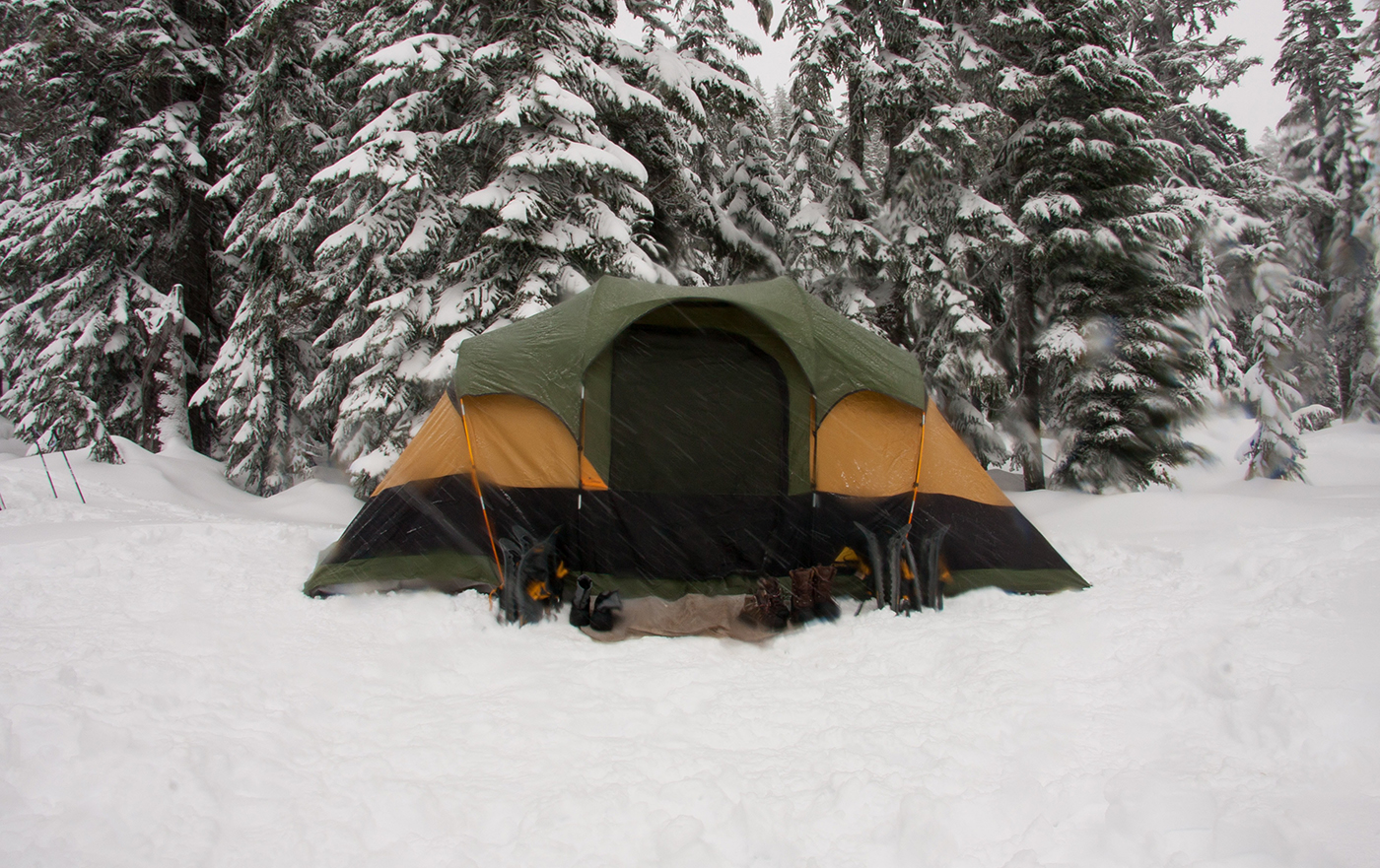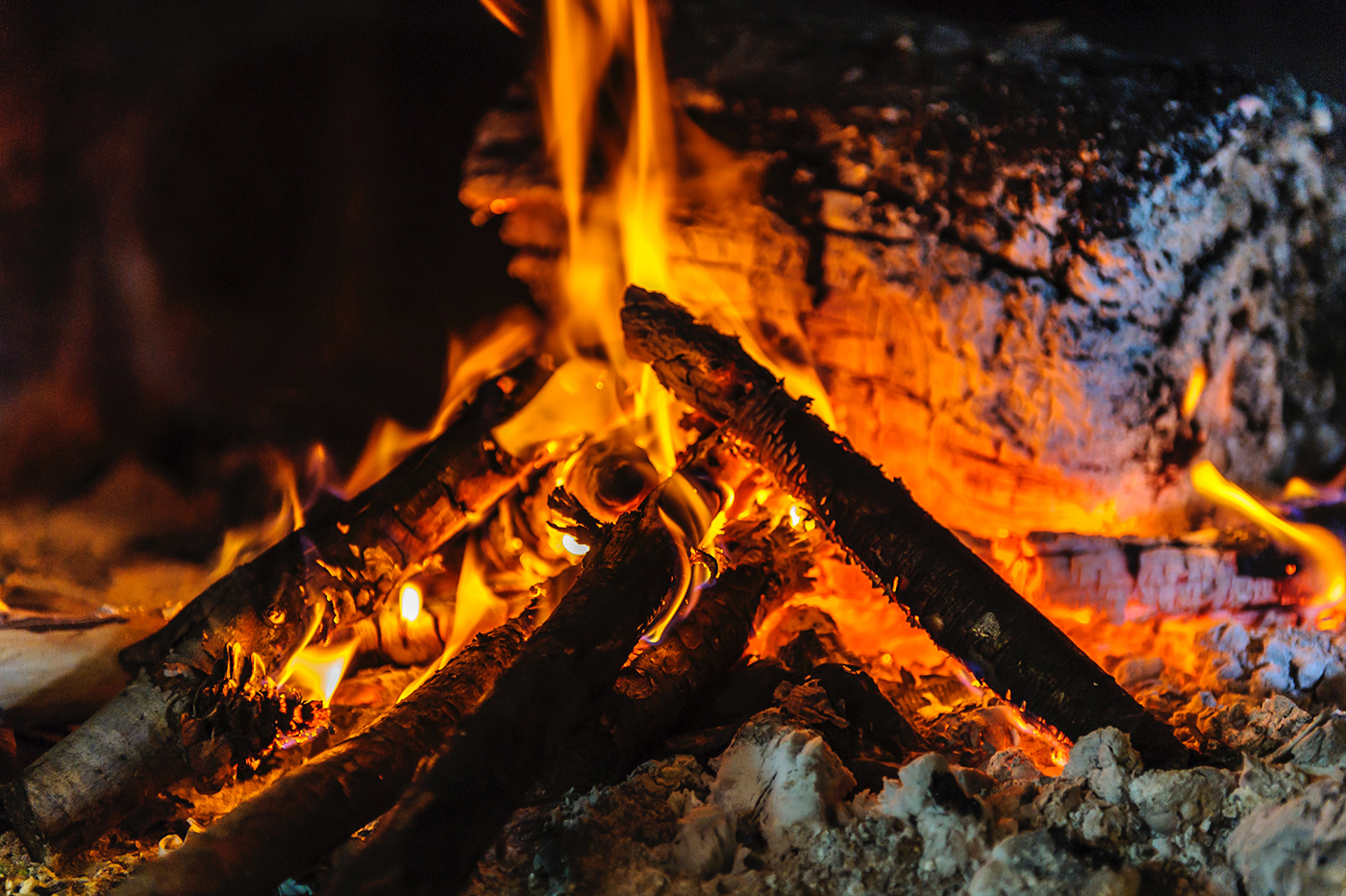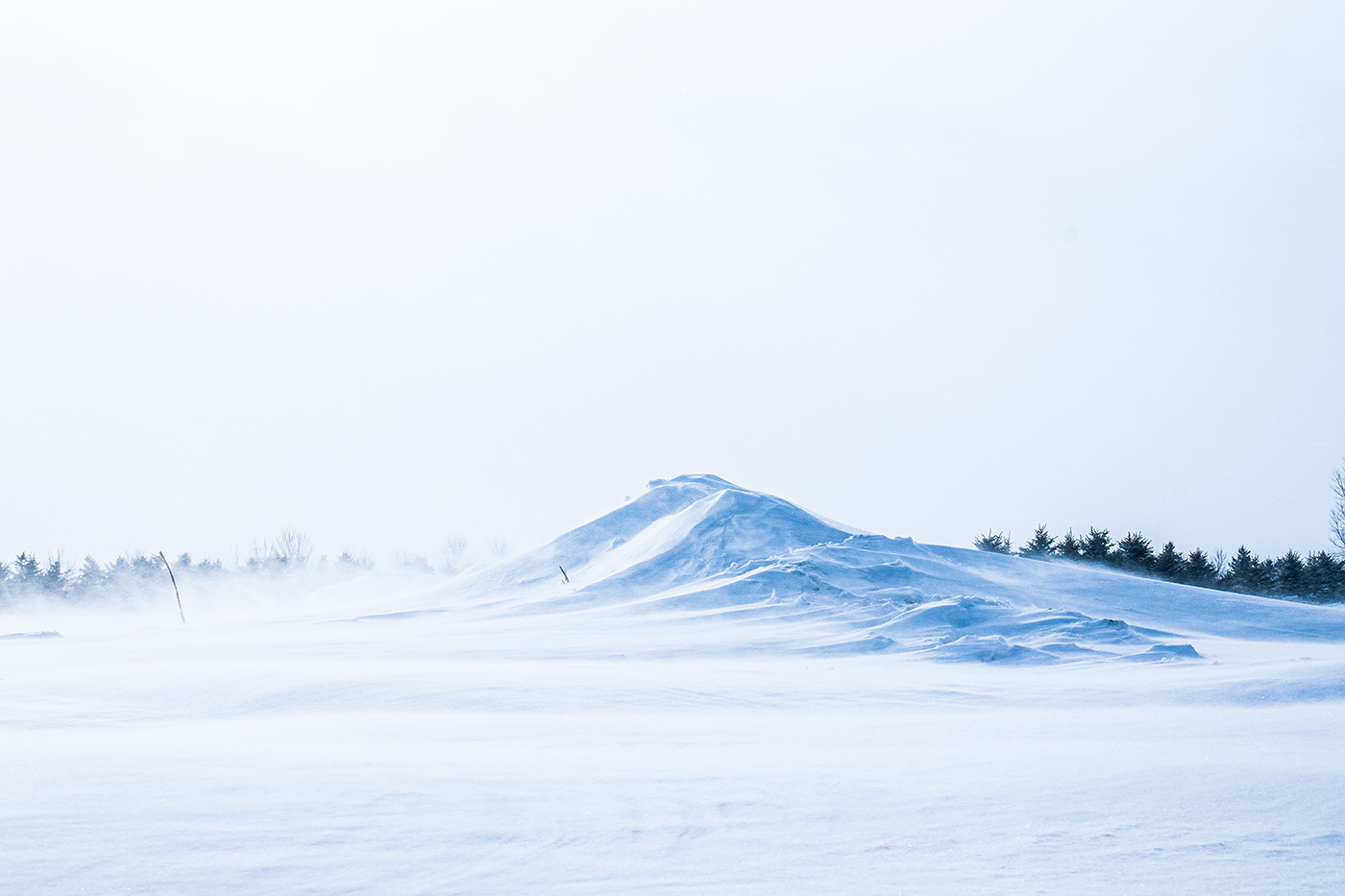How to Set Up the Perfect Winter Backcountry Camp Site

The following is excerpted from AMC’s Essential Guide to Winter Recreation, by Andrew Vietze.
A comfortable camp can make all the difference on a winter backpacking trip. After a long, cold day on the trail, the comforts of “home” mean even more than they do in summer, and replicating elements in this setup will leave you well rested and restored. Here’s how you might set up your winter camp site for optimal comfort, convenience, and warmth.
Picking a Site Location
Set up your campsite somewhere safe but as protected from the elements as possible. Camp behind windbreaks for warmth. It’s a good idea to locate as close as possible to a usable water source. It beats melting mountains of snow. Of course, follow the Leave No Trace guideline of siting 200 feet from any water source. Think about the flow of the site, where people will be, and the relationship among sleeping, cooking, fire, and bathroom areas.

Setting Up Your Tent
Pack down the snow under your tent using your boots or, better yet, your snowshoes. Due to the potential for high winds and heavy snows, it is imperative that the tent be taut. Three-season stakes will not properly anchor your tent lines in the snow, but a simple deadman stake will do the job. Wrap each tent cable securely around a stake, a stick, or a similar object then bury this anchor horizontally, about a foot deep in the snow. Pack the snow down firmly. Once it hardens nothing will be able to dislodge it until you’re ready to dig it up and go.
Inside the Tent
Besides appropriate layering, here are some tips for staying warm inside the tent at night:
- Bring two layers of sleeping pads and a cold-weather sleeping bag rated to the temperature at which you’re sleeping.
- Wear a hat. Your head is one of the few parts of the body that is occasionally uncovered while you sleep. A toque helps keep it toasty, in case it escapes the mummy sack.
- Socks rock. A fresh, dry pair does wonders.
- Make a puffer buffer. Some campers like to wear their puffer jacket or vest to bed and sleep in a lighter bag. Or they tuck these lofty items around themselves so there is less space to heat in the bag itself.
- Warm your water bottle. Heat water in your water bottle and place it near your feet for a bit of radiant warmth. This also keeps the next day’s water from freezing.

Campfire Considerations
Leave No Trace recommends: using only a cookstove; using only existing fire rings; or, if you must build a fire, doing so in a way that leaves nothing behind, not even a black smudge.
Building a Kitchen for Camp Cooking
Follow these tips for constructing a functional camp kitchen and keep your energy up throughout your winter adventure:
- When building a custom kitchen, it’s easier to build down rather than up. In other words, dig out a space rather than trying to collect and mound snow. Use your shovel to sculpt and your feet to pack down.
- Dig two deep rows, forming a table in between them. Shovel more shallowly on the outside of the trenches to create benches.
- Insulate your benches using foam sleeping pads. This turns your kitchen into a comfy lounge.
- If you want to prevent everything from getting wet from falling precipitation, tie a tarp over your kitchen area—though not above your campfire.
- Dangle a headlamp from your tarp for a chandelier.
- When laying out your kitchen, create logical stations for handwashing, food prep, and dishwashing. Keep hand- and dishwashing away from your cooking and prep area.
- Remember that your cookstove will melt the snow beneath it, so place some form of shelf or insulation under it. Keep the fuel off the snow, too. The blade of your shovel or bottom of your sled works well for this.
- Bring or build a windbreak for your cookstove. Cold breezes make your stove work harder and your fuel burn faster. You can solve this problem by digging out a shelf for your stove below the surface of the snow, protecting it from the wind.
- Store your food away from your tent. Although bears are unlikely to be a major problem, rodents might be about. Hanging your food and trash from a tree limb at night prevents any issues. Stainless steel “rat sacks” help keep even those pesky pine martens from getting at your tasties.

Water Safety
Water is all around us in the cold-weather months in the forms of ice and snow. Pop some snow in a pot, melt it, and fill your bottles. One of the advantages of melting snow for water is that you can consider the resulting liquid clean and safe once it has been boiled. (All water, even when collected from a perfectly white snowfield, should be treated.)
Backcountry water-treatment methods include: (a) a filter straw, which allows a backpacker to drink directly from a water source but can freeze if packed away with water inside; (b) a pump system, which pumps water directly from a source and through a filter, all made of parts that can ice over and crack; (c) a chlorine dioxide solution, also known as a chemical treatment; and (d) ultraviolet radiation, which uses a UV light in the water container to inactivate pathogens, although the batteries that power UV filters drain more quickly in cold weather than in warm weather.
Using the Bathroom
Pick a spot far from camp and 200 feet from any water source for a bathroom, hidden behind a snow wall or a tarp. Pack out all solid waste and toilet paper in the winter in sealed bags.




